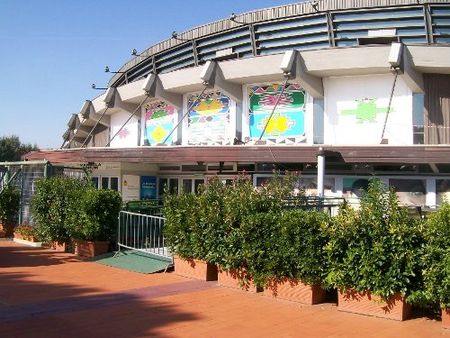Nelson Mandela Forum
1985 establishments in ItalyBasketball venues in ItalyIndoor arenas in ItalySports venues completed in 1985Sports venues in Florence ... and 1 more
Volleyball venues in Italy

Nelson Mandela Forum, formerly Palazzetto dello sport di Firenze and Palasport, is an indoor sports arena that is located in Florence, Italy. Inaugurated in 1985, the arena was renamed to Nelson Mandela Forum in 2004.The seating capacity of the arena is 7,500 people for basketball games, and the maximum capacity for rock concerts, with general admission tickets, is 8,262 people. It was the home arena of the Italian basketball club Pool Firenze Basket, before the club's relegation to the minor leagues in 2009. It is the home venue of women's volleyball club Il Bisonte Firenze since 2014.
Excerpt from the Wikipedia article Nelson Mandela Forum (License: CC BY-SA 3.0, Authors, Images).Nelson Mandela Forum
Viale Malta, Florence Quartiere 2
Geographical coordinates (GPS) Address External links Nearby Places Show on map
Geographical coordinates (GPS)
| Latitude | Longitude |
|---|---|
| N 43.776859 ° | E 11.283045 ° |
Address
Nelson Mandela Forum
Viale Malta
50136 Florence, Quartiere 2
Tuscany, Italy
Open on Google Maps











